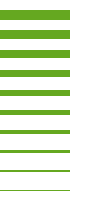https://doi.io-warnemuende.de/10.12754/msr-2022-0120
doi:10.12754/msr-2022-0120
© Author(s) 2022. This work is distributed
under

Dieses Werk ist lizenziert unter einer Creative Commons Namensnennung - Nicht kommerziell - Keine Bearbeitungen 4.0 International Lizenz.
Biological assessment of the Baltic Sea 2020
Abstract. In 2020, a total of 153 phytoplankton species were recorded on 4 annual monitoring cruisesreported here, marking a species diversity comparable to previous years. Mean annualphytoplankton biomass was lower in 2020 than in 2018 and 2019, but close to the 20-year mean. The spring bloom of 2020 was represented by only two cruises, taking place in February and May, thus missing the peak of the bloom season that is usually captured by the March cruise. As inprevious years, in 2020 a diatom dominated spring bloom started in February at the southern most station in Kiel Bight. While “travelling” successively northward, dominance changed from diatoms (Skeletonema marinoi) to the ciliate Mesodinium rubrum. By May, the now dinoflagellate dominated bloom was already declining. The late spring community contained high biomass shares of small, unidentified gymnodinoids as well as colonialcyanobacteria. The summer phytoplankton community was unusual in 2020 as in the Belt Sea and the Arkona Basin it contained high biomass shares of the diatom Dactyosolen fragilissimus. The toxic invasive dinoflagellate Alexandrium pseudogonyaulax was a dominant species in the Belt Sea. Cyanobacteria dominated the northern Basins, but total phytoplankton biomass was, generally low. The phytoplankton growth period extended well into the autumn when high biomass levels were found in the southern sea areas, made by diatoms of the genera Pseudosolenia, Cerataulina and potentially toxic Pseudo-nitzschia spp. The 2020 phytoplankton sedimentation pattern was similar to the previous year with diatoms dominating the settling matter in spring and autumn and dinoflagellate/cyanobacteria sedimentation pulses occurringin summer.The zooplankton was characterized by a low stock size which continued a series of years of lowstock size that started around 2010. This decline is primarily based on a decreasing abundance of rotifers in spring and cladocerans in autumn, and to a lesser degree on copepods. While the abundance of copepods was lower than usual in the Kiel Bight in 2020, cladocerans and rotifers were less abundant than usual in the Bay of Mecklenburg and the Arkona Basin. The total zooplankton density of 4.8 x 104 ind. m-3 was the lowest value recorded since 20 years and accounts for only 1/6 of the long-term average. Due to the low abundance of rotifers and cladocerans, copepods dominated the zooplankton in all areas, with A. longiremis as a majorspecies. In total, fifty-four different zooplankton taxa were identified in the Kiel Bight, the Bay of Mecklenburg and the Arkona Basin. The species composition resembled the inventory of the previous year with a strong influence of species with a broad salinity tolerance and characteristic of the brackish waters. Nevertheless, halophilic organisms like the copepods Calanus spp., Centropages typicus or the cladoceran Penilia avirostris were regularly observed albeit as single findings. The anthomedusae Lizzia blondina and Staurosarsia gemmifera are non-indigenousspecies and were found in the Bay of the Mecklenburg. The 118 species found in the macrozoobenthos in 2020 mark a low to medium diversity. The species number found at the eight monitoring stations ranged between 10 and 66. In mostregions, the oxygen supply in bottom waters in the current year was always higher than 2 ml/l. However, in the Mecklenburg Bay we detected oxygen values below 0.5 ml/l in September. After a dramatically decrease of diversity and abundance in the Fehmarnbelt area in 2018, a complete recovering was observed in 2019 and 2020. During the autumn sampling in 2020, the benthic fauna appeared to be affected by the oxygen situation of that year’s summer. At both stations, very low numbers were observed. At all other stations the diversity was similar or slightly increased compared to the last years. Depending on the region, the abundances ranged from293 to 16.230 ind. m-², and the biomass (ash free dry weight) from 0.9 g m-² to 66.4 g m-². Seventeen species of the German Red List (Categories 1, 2, 3 and G) were observed at the eight monitoring stations. With seven, the number of invasive species in 2020 was low. Melita nitida, a species of amphipod, originally from North America and arriving in the southern Baltic Sea around 2013, was observed for the first time at the monitoring station in the Pomeranian Bay. Rhithropanopeus harrisii, also originally from North America, can be observed at the Oderbank since 2006. Finally, as a cryptic neozoan species, the ascidian Molgula manhattensis was observed in the Kiel Bay.
